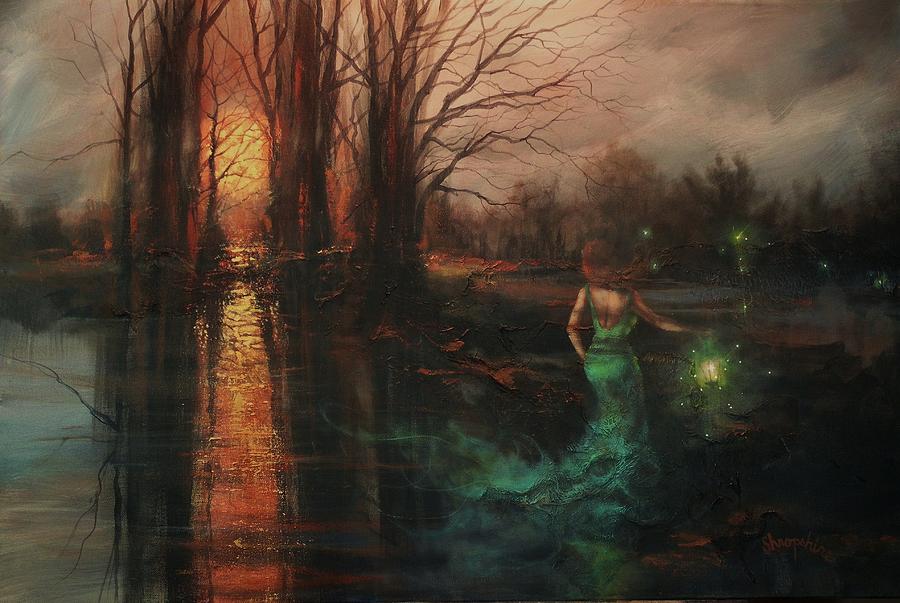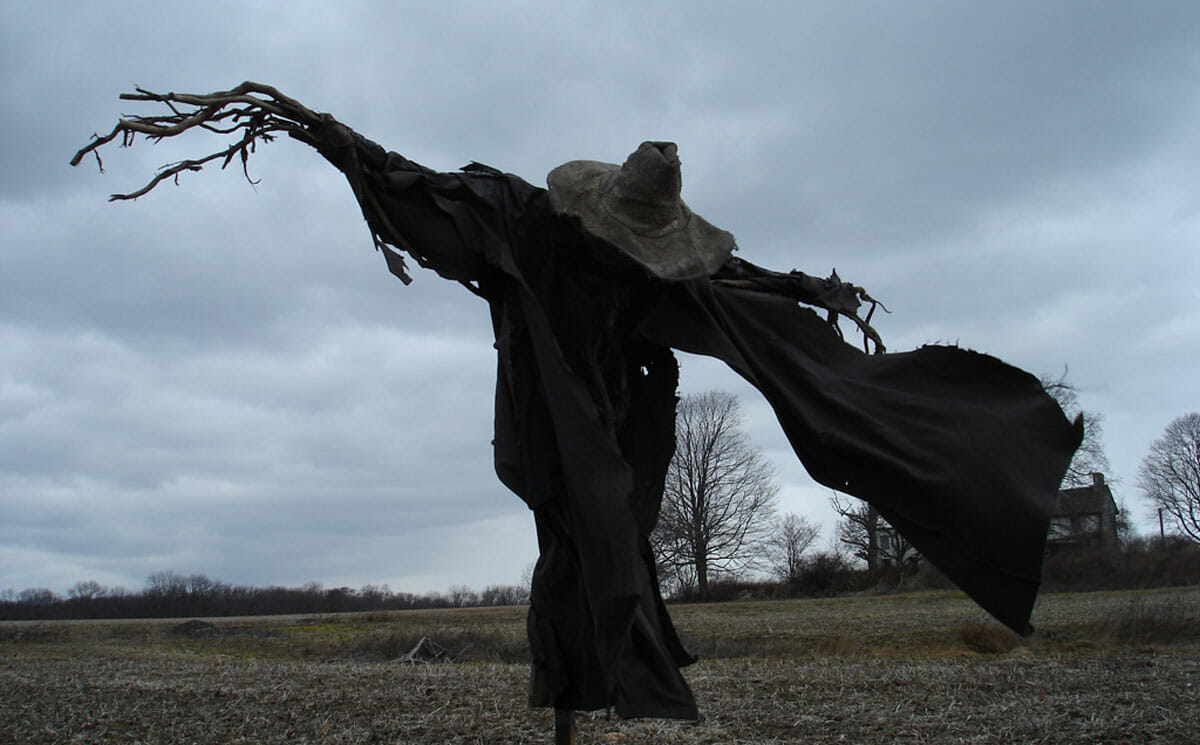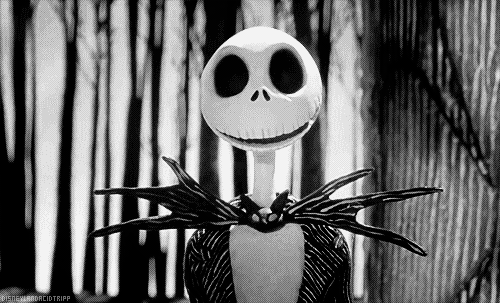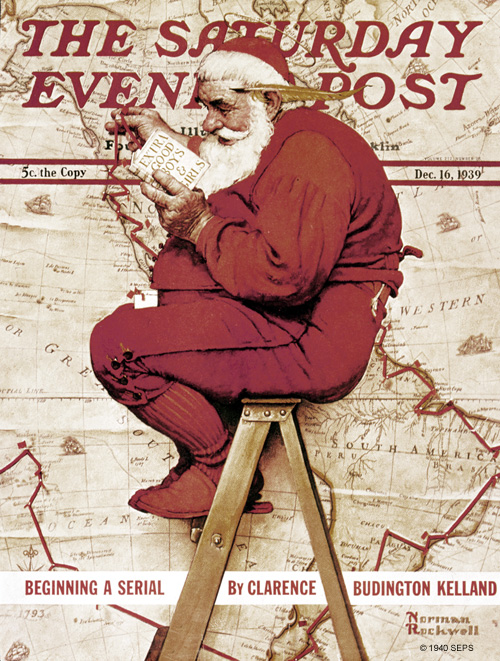 |
| Norman Rockwell, 1939 |
When the first December frost arrives we look to the holidays in anticipation of celebration, the season of hope and enchantment, perhaps the very time of year when we first learned about magic. For on Christmas Day, as children we knew anything was possible. Our wishes and hopes would be rewarded when we discovered gifts under the Christmas tree, at some point we knew not to ask from whom the gifts were bequeathed. Then as we grew and developed, our minds introduced us to an age of skepticism. At a certain point we are challenged with one simple question: "Do you believe in Santa Claus?"
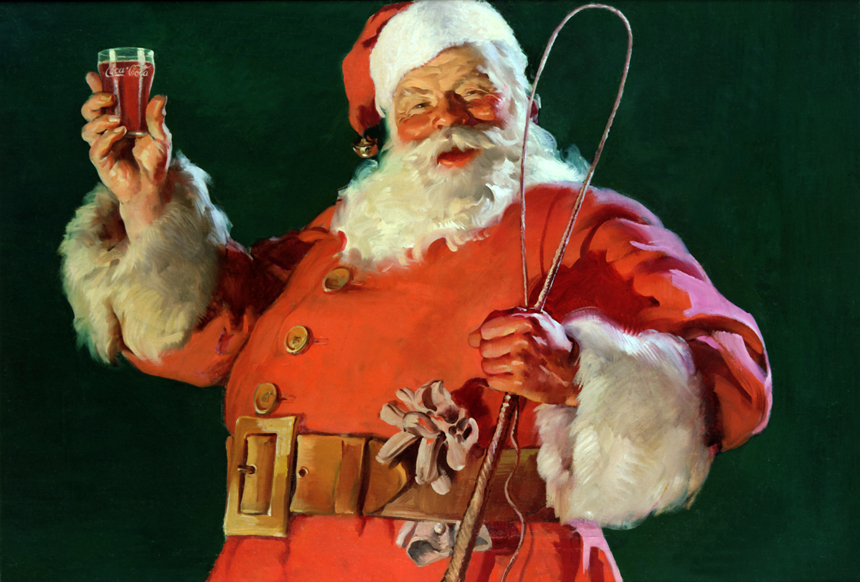 |
| Coca-Cola Santa Claus |
There is an ignorant claim that the Santa Claus we know today has been perpetuated by the Coca-Cola Company as a ploy to boost profit and sales. This is far from true, Santa Claus has a rich history, he is the culmination of winter tradition that transcends more cultures than can be counted. He has many names:
St. Nicholas,
Father Christmas,
La Befana,
Christkindl (Kris Kringle),
Kolyada,
Sinterklaas,
Père Noël, etc.
 |
| St. Nicholas, Arthur Rackham 1907 |
Anthropologically Christmas is a celebration of light, the festival in which on the Winter Solstice ancients would feast and honor the mid-point of harsh winter. Yuletide fires honored the sun whose warmth would return in the spring. Bonfires evolved and became candle wicks lit within trees, a continued tradition to honor the light of the fire that provides warmth from the bitter cold and a symbol for the sun who retreats in the winter. When ancient primitive tribes gathered in circles to honor the solstice they had many Shamanistic rituals. One was to dress in their finest furs with masks and travel from lodging to lodging demanding victuals. Within these circles one Elder who was considered the Patriarch was honored because it was believed that he alone harnessed the power to bring back the light.
'English masked balls of the 17th Century dubbed him Noël, and he is the forerunner of St. Nicholas (Santa Claus) and Father Christmas.' ---Edouard Brasey, Faeries & Demons
 |
| Anne Stokes |
Many of our modern depictions of Santa Claus have developed from Norse mythology. Norse legends weave around a central god figure called Odin. Like Zeus, Odin roamed the world taking part in many activities. The night of the Winter Solstice was set aside as the great hunt for Asgard, a time when the air is filled with the sounds of galloping hooves as Odin and his knights soar through the sky. Odin is followed by a great league of elves and spirits. Mortals upon the earth who offered him reverence were bestowed with gifts.
 |
| George Von Rosen 1886 |
"So we abandoned the former God Odin and his company, but everything that was once attributed to him and everything that used to be done in his honor such as, among other things, leaving the last ear of corn for his horse, now shifted partly to Saint Nicolas; we mounted the bishop on a horse, gave him a black valet with a whip and a bag of cinders and called them Saint Nicolas the Demon." --- Rond den Herd, Guido Guezelle
 |
| 'The Wild Hunt', Peter Nicloai 1872 |
Odin's flight, gifts, elves and even his war horse were handed to Saint Nicholas.
 |
| St. Nicholas Center, Holland |
There are many legends both light hearted and dark in which St. Nicholas helps men and children alike by performing various miracles. Because he could calm storms he is known as the patron Saint of Sailors and because he restored to life three murdered boys he is the patron Saint of Children.
St. Nicholas of Christian legend was a priest from a wealthy family in Patara near Myra (Asia-Minor) in what is now modern day Turkey. Born around 280 AD he was known as a kind man who traveled the country gifting his wealth to the less fortunate. Some legends regard him as a powerful man who had a talent for miracles. St. Nicholas was extremely devoted to the less fortunate and especially children. He had a peculiar way of hiding gold coins in peoples shoes because he was modest and never wanted to be thanked. One of his greatest legends begins a such: A poor man had three daughters whom he could not marry off, the reason being that each had very little to no dowry. In these times when a female child reached a certain age and could not be married off they were sold into prostitution. Legend has it that when Nicholas learned about the girls plight, he decided to take action. When the first and second daughters came to age he tossed each a bag of gold through an open window while they were resting in the night. For the third daughter he discovered the poor man searching for his benefactor and in an effort to remain anonymous tossed the third bag of gold down the chimney. (It is in the memory of this generous moment that children gather before the chimney.) Each daughter then had a dowry and could be married happily.
 |
| St. Nicholas Giving Alms, Jan Heinsch |
'During a famine in 311-312 CE, a ship full of wheat docked in the port of Myra, headed for the Emperor in Constantinople. St. Nicholas, the Bishop of Myra, asked if the sailors wouldn't mind giving him some wheat for the poor, but the sailors refused, because the Emperor had been promised a certain weight of wheat so they couldn't give any away. Nicholas told them whatever they gave him, the sailors would suffer no losses. And indeed, when they arrived in Constantinople, the weight was somehow the same.' ---gizmodo.com
 |
| Vintage Father Christmas Card |
Though now Father Christmas is synonymous with Santa Claus he is actually a much older folkloric figure, a personification of Christmas itself. In 15th Century England a personified 'Christmas' figure, taken from ancient celebrations, traditionally an old man at adult parties, would announce the birth of Christ and encourage every one to drink and be merry. (These circumstances are expressed in an ancient carol written by Richard Smart, Rector of Plymtree from 1435 to 1477.)
 |
| Vintage Father Christmas Card |
16th Century Elizabethan era defined Father Christmas with green and sometimes scarlet robes lined with fur.
 |
| Vintage Father Christmas Card |
"The specific depiction of Christmas as a merry old man seems to have emerged in the early 17th century. The rise of puritanism had led to increasing condemnation of the traditions handed down from pre-Reformation times, especially communal feasting and drinking. As debate intensified, those writing in support of the traditional celebrations often personified Christmas as a venerable, kindly old gentleman, given to good cheer but not excess. They referred to this personification as "Christmas", "Old Christmas" or "Father Christmas". At the time "Father" was a title sometimes given to older men worthy of respect: "---wikipedia
 |
| Kansas City Repertory Theatre |
In the 18th Century Father Christmas, a common figure at holiday parties was utilized as a particular brand to inspire generosity, differing from our modern Santa he spends his holiday time feasting and drinking. A proper depiction of this development is found in the 'Ghost of Christmas Present' in Charles Dickens immortal classic A Christmas Carol (1843). The Ghost of Christmas Present is a boisterous giant who wears a green robe lined with fur. He embodies the spirit of Christmas and carries a torch which is reminiscent of the bright fires in ancient solstice ritual, he can anthropologically be compared to the ancient Shamanistic Elders who were believed to have the power of light.
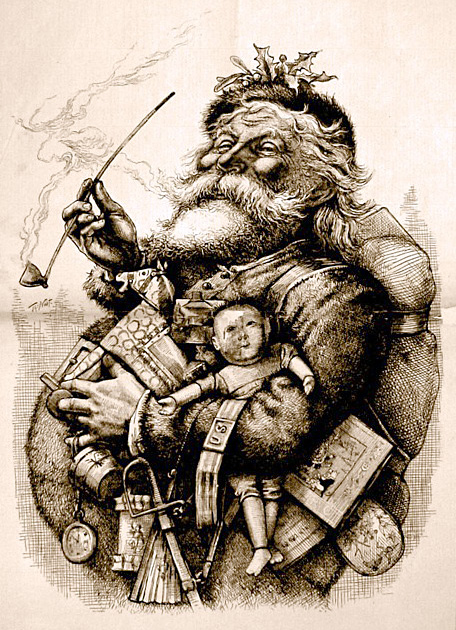 |
| 'A Visit from St. Nicholas', Thomas Nast 1881 |
The most notable contribution to Santa Claus as we know him comes from famed author Clement Clark Moore in his poem A Visit from St. Nicholas, first published in the New York Sentinel in 1823. This is the beloved poem that begins: T'was the Night Before Christmas.
He was dressed all in fur, from his head to his foot,
And his clothes were all tarnished with ashes and soot;
A bundle of toys he had flung on his back,
And he looked like a peddler just opening his pack.
His eyes -- how they twinkled! his dimples how merry!
His cheeks were like roses, his nose like a cherry!
His droll little mouth was drawn up like a bow,
And the beard of his chin was as white as the snow;
The stump of a pipe he held tight in his teeth,
And the smoke it encircled his head like a wreath;
He had a broad face and a little round belly,
That shook, when he laughed like a bowlful of jelly.
He was chubby and plump, a right jolly old elf,
And I laughed when I saw him, in spite of myself;
A wink of his eye and a twist of his head,
Soon gave me to know I had nothing to dread;
He spoke not a word, but went straight to his work,
And filled all the stockings; then turned with a jerk,
And laying his finger aside of his nose,
And giving a nod, up the chimney he rose;
He sprang to his sleigh, to his team gave a whistle,
And away they all flew like the down of a thistle.
But I heard him exclaim, ere he drove out of sight,
"Happy Christmas to all, and to all a good-night."
 |
| 'A Visit from St. Nicholas', Arthur Rackham 1849 |
Clement C. Moore gave St. Nicholas a more elvish appeal, defining his white beard and large round belly. His borrowed aspect of multiple reindeer versus a single horse has remained a North American staple. Santa Claus and his eight reindeer have been a part of the Macy's Thanksgiving Day Parade in New York City ever since 1924. Santa's float is the last in the parade. He is considered the grand marshal of Christmas and once his float is seen it is arguably acceptable to begin holiday festivities.
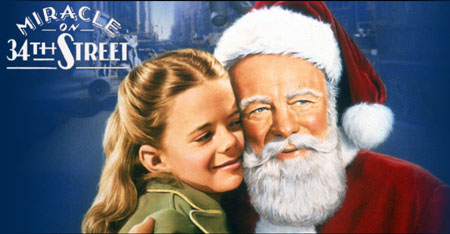 |
| Natalie Wood & Edmund Gwenn, 1947 |
With the development of talking pictures Santa Claus has a history of appearing in cinema. His most notable portrayal is seen in the 1947 film A Miracle on 34th Street. 34th Street is the famous street in which Santa Claus was first welcomed into Herald Square after the very first Macy's Day Parade. In A Miracle on 34th Street Santa Claus saves the Macy's Day Parade when he replaces an intoxicated Santa impersonator. He then goes on to fill his role at the Macy's department store. After a series of events Kris, as he calls himself, is put on trial and a Judge must determine if Santa truly exists. This film is an instant classic, it challenges Christmas perceptions and the power of belief.
 |
| Edmund Gwenn 1947 |
"You think I'm a fraud, don't you...I'm not just a whimsical figure who wears a charming suit and affects a jolly demeanor. You know I'm a symbol, I'm a symbol of the human ability to suppress the selfish and the hateful tendencies that rule the major part of our lives. If you can't believe, if you can't accept anything on faith then you are doomed for a life dominated on doubt." ---Kris Kringle, A Miracle on 34th Street (1994)
 |
| Vintage Santa Claus |
The most beautiful examination of Santa Claus was written as a response letter to a little girl in 1897 named Virginia O'Hanlon. Virginia took it upon herself to write to a prominent New York newspaper called The Sun after she had inquired about the existence of Santa Claus with her own father. Her father inspired her by saying: "If it is in the sun, then it is so." The Sun's editor who received the letter, Francis Pharcellus Church was then given the opportunity to philosophically answer the girls question and because he did not dismiss the child it is perhaps the most beloved editorial of all time.
We take pleasure in answering thus prominently the communication below, expressing at the same time our great gratification that its faithful author is numbered among the friends of The Sun:
Dear Editor—
I am 8 years old. Some of my little friends say there is no Santa Claus. Papa says, "If you see it in The Sun, it's so." Please tell me the truth, is there a Santa Claus?
Virginia O'Hanlon
115 West Ninety Fifth Street
Virginia, your little friends are wrong. They have been affected by the skepticism of a skeptical age. They do not believe except what they see. They think that nothing can be which is not comprehensible by their little minds. All minds, Virginia, whether they be men's or children's, are little. In this great universe of ours, man is a mere insect, an ant, in his intellect as compared with the boundless world about him, as measured by the intelligence capable of grasping the whole of truth and knowledge.
Yes, Virginia, there is a Santa Claus. He exists as certainly as love and generosity and devotion exist, and you know that they abound and give to your life its highest beauty and joy. Alas! how dreary would be the world if there were no Santa Claus! It would be as dreary as if there were no Virginias. There would be no childlike faith then, no poetry, no romance to make tolerable this existence.
We should have no enjoyment, except in sense and sight. The external light with which childhood fills the world would be extinguished.
Not believe in Santa Claus! You might as well not believe in fairies. You might get your papa to hire men to watch in all the chimneys on Christmas Eve to catch Santa Claus, but even if you did not see Santa Claus coming down, what would that prove? Nobody sees Santa Claus, but that is no sign that there is no Santa Claus. The most real things in the world are those that neither children nor men can see. Did you ever see fairies dancing on the lawn? Of course not, but that's no proof that they are not there. Nobody can conceive or imagine all the wonders that are unseen and unseeable in the world.
You tear apart the baby's rattle and see what makes the noise inside, but there is a veil covering the unseen world which not the strongest man, nor even the united strength of all the strongest men that ever lived could tear apart. Only faith, poetry, love, romance, can push aside that curtain and view and picture the supernal beauty and glory beyond. Is it all real? Ah, Virginia, in all this world there is nothing else real and abiding.
No Santa Claus! Thank God! He lives and lives forever. A thousand years from now, Virginia, nay 10 times 10,000 years from now, he will continue to make glad the heart of childhood.
-----------------
"Is There a Santa Claus?" reprinted from the September 21, 1897, number of The New York Sun.
Source Material:
- The Enchanted World Series: The Book of Christmas, Time-Life Books,1986
- Faeries and Demons and Other Magical Creatures, Edouard Brasey, Barnes and Noble Books New York, 2002
- St. Nicholas to Santa --- National Geographic.com
- 11 Insane Things You Didn't Know About Santa Claus --- i09.gizmodo.com
- The Legend of St. Nicholas --- History.com
- wikipedia.com
- dictionary.com






















